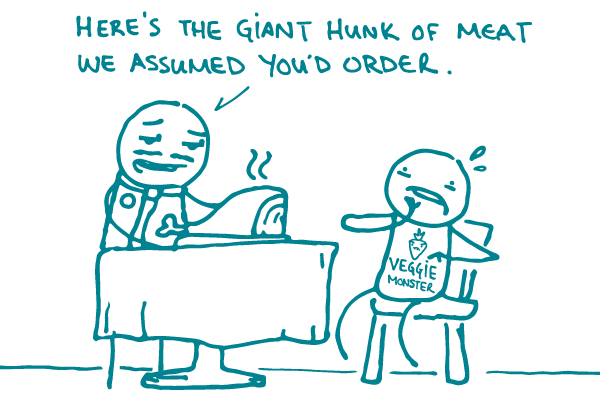
Picture this, dear readers: you sit down at a restaurant. You’re expecting a menu, but the waiter says he already knows what you want and serves you a roast beef sandwich. Never mind that you’re a vegetarian with a desperate craving for tomato soup.
Whether we’re talking about food or health information, the takeaway is the same — when we make assumptions about what other people want or need, we can easily get into trouble.
That’s why human-centered design (HCD) is so important. As you may know, HCD is a method for developing websites and products that involves the target audience as co-creators in every step of the process. HCD allows you to stop guessing about your audience and get reliable information straight from the source.
From there, you’re in a prime position to serve up some soup — or whatever it is that will meet your users’ needs. HCD is a win-win: your users will be satisfied and you won’t waste valuable time, energy, and money making a sandwich that ends up in the trash.
So, when developing any kind of product, follow an HCD process. Here’s one example of how it might play out:
- Understand user needs. Say you’re thinking about creating an app to help older adults keep track of their medicines. You ask some questions up front and learn that your target audience prefers a paper system to a digital one. Bye-bye, app.
- Test the product with users. You do some user testing on a budget to look for issues. Participants say they don’t get why it’s a big deal to skip their meds. Now you know you need to address the question, what’s in it for me?
- Incorporate user feedback to refine your product. You add a strong main message to the beginning of your material that describes the benefits of taking medicines as prescribed. The tool is now clear about the payoff for your users!
The bottom line: Everybody wins when you follow a human-centered design process and create products people actually want.
Browse recent posts